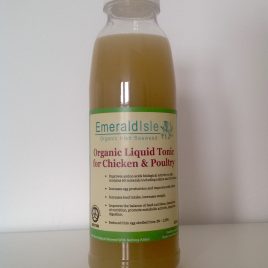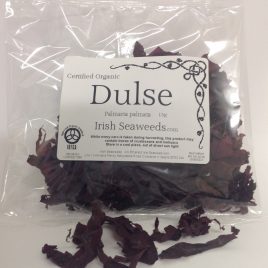SEAWEED AS ANIMAL FEED
All Emerald Isle Seaweed has be tested for chemical, pesticides and water quality.
Many studies had been performed investigating the effect of using seaweed or macroalgae (even algae co-products) – as a part of the ruminant animal diets – on the animals production performance and health .The main feed market areas were microalgae may have a valuable application are summarized below:
For a long time, animals such as sheep, cattle and horses that lived in coastal areas have eaten seaweed,especially in those European countries where large brown seaweeds were washed ashore. Today the availability of seaweed for animals has been increased with the production of seaweed meal: driedseaweed that has been milled to a fine powder. Norway was among the early producers of seaweed meal,using Ascophyllum nodosum, a seaweed that grows in the eulittoral zone so that it can be cut and collected when exposed at low tide . France has used Laminaria digitata, Iceland both Ascophyllum
and Laminaria species, and the United Kingdom, Ascophyllum Because Ascophyllum
is so accessible, it is the main raw material for seaweed meal and most experimental work to measure the effectiveness of seaweed meal has been done on this seaweed. The seaweed used for meal must be freshly cut, as drift seaweed is low in minerals and usually becomesinfected with mould. The wet seaweed is passed through hammer mills with progressively smaller screensto reduce it to fine particles. These are passed through a drum dryer starting at 700-800°C and exiting at nomore than 70°C. It should have a moisture level of about 15 percent. It is milled and stored in sealed bagsbecause it picks up moisture if exposed to air. It can be stored for about a year.
Analysis shows that it contains useful amounts of minerals (potassium, phosphorus, magnesium, calcium,sodium, chlorine and sulphur), trace elements and vitamins. Trace elements are essential elements neededby humans and other mammals in smaller quantities than iron (approximately 50 mg/kg body weight), andinclude zinc, cobalt, chromium, molybdenum, nickel, tin, vanadium, fluorine and iodine. Because most often carbohydrates and proteins are not digestible, the nutritional value of seaweed has traditionally been assumed to be in its contribution of minerals, trace elements and vitamins to the diet of animals. In Norway, it has been assessed as having only 30 percent of the feeding value of grains.





